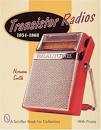
A defining moment in the lives of many Boomers came in October 1954 when Texas Instruments and a company called the Regency Division of I.D.E.A. combined to offer the first production model of the transistor radio. No longer would be young people be tied to a plug-in radio in the den or a manually tuned radio in the car to listen to their favorite rock and roll songs. Now, with a smaller, portable radio on hand, the music of Fats Domino, Little Richard, Buddy Holly and The Platters went where we went and came on with the push of a button.
It was a few years after the initial introduction before transistor radios became truly affordable and I got one for Christmas in 1957. It was leather bound and made by RCA. The book-sized radio could pick up stations as far away as Memphis and I could listen to the Cincinnati Reds play baseball or tune in Red Barber and the Brooklyn Dodgers. This was truly a game-changer for young people.
Before the advent of the transistor, radios used tubes. They were bulky, inefficient and had to be plugged into an outlet. The small transistors required less power, a four-pack of size C batteries did the trick, and later, the 9-volt battery added extra hours of listening between battery changes.
With all the technological innovations today, it’s hard for this generation to imagine the sheer impact of the transistor radio. Young Americans were beyond ready for this innovation as rock and roll entered into its golden age. A newfound prosperity following the war allowed families to afford this electronic luxury, though it took several years for the prices to truly fall in line. The first model in production listed at $49.95, the equivalent of about $500 in today’s money, but by 1962, a quality transistor radio was available for as little as $15.
Within a few years, pocket sized radios allowed an increasingly mobile population to take their music to the beach, on a walking trail, to work – literally anywhere.
In the early days, batteries were the biggest obstacles to a well functioning transistor radio. I remember falling asleep listening to music on my transistor radio and awakening the following morning with dead batteries. We didn’t have the Energizer Bunny in those days and batteries didn’t have much of a shelf life. They were fairly pricey, too.
Still, with a transistor radio and a little battery power, folks like Elvis Presley, Chuck Berry, Sam Cooke, and The Diamonds (Little Darlin’) were just one click away.
Those were the days!

